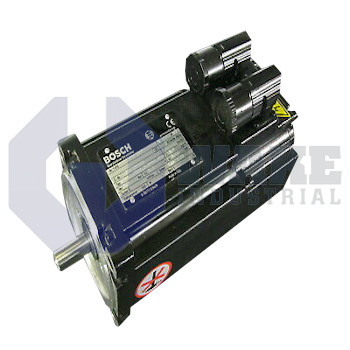Product Description
Bosch Rexroth's SF-A3.0068.030-14.050 motor features electronic commutation and permanent magnet excitation. When this SF motor is turned on, the back electromotive force is zero, which indicates that the coil is receiving the full operating voltage and that the motor is drawing the maximum amount of current when it is turned on but not spinning. Faster motor rotation causes the reverse emf to increase, but always against the direction of driving emf and lowering the coil's voltage and current consumption.
The SF-A3.0068.030-14.050 motor has an A3 dimension and produces 3000 revolutions every minute. The integrated electronics of this SF motor are primarily responsible for their great efficiency. All along the operational speed range, great efficiency is attained by automatically modifying the control input and monitoring the motor functions continuously. A motor's brake feature lessens the amount of damage that happens to the motor and other system parts. It lessens the load and pressure on the motor and related mechanical components by offering controlled stopping, extending their lifespan and requiring less maintenance.
Convection cooling, which is used in thermal management, is a mixture of two processes. In technical terms, the first process is conduction, in which heat is transferred from the motor surface to the surrounding air. The second mechanism is advection, which is the transfer of air heated by the motor operation away from its surface. An encoder is a sort of feedback that is frequently used in its automation systems to make sure that the mechanical element (shaft) is moving precisely as intended. It is connected to an interface to interpret the pulse data that the encoder is sending out.


 Wake Industrial Warranty
Wake Industrial Warranty













